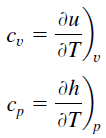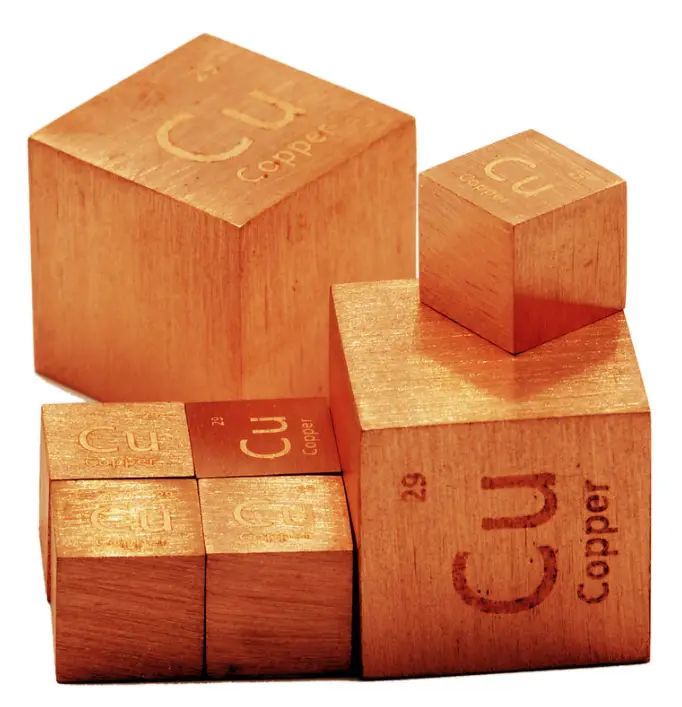About Copper
Copper is a soft, malleable, and ductile metal with very high thermal and electrical conductivity. A freshly exposed surface of pure copper has a reddish-orange color. Copper is used as a conductor of heat and electricity, as a building material, and as a constituent of various metal alloys, such as sterling silver used in jewelry, cupronickel used to make marine hardware and coins, and constantan used in strain gauges and thermocouples for temperature measurement.
Copper – Specific Heat, Latent Heat of Fusion, Latent Heat of Vaporization
Specific heat of Copper is 0.38 J/g K.
Heat capacity is an extensive property of matter, meaning it is proportional to the size of the system. Heat capacity C has the unit of energy per degree or energy per kelvin. When expressing the same phenomenon as an intensive property, the heat capacity is divided by the amount of substance, mass, or volume, thus the quantity is independent of the size or extent of the sample.
Latent Heat of Fusion of Copper is 13.05 kJ/mol.
Latent Heat of Vaporization of Copper is 300.3 kJ/mol.
Latent heat is the amount of heat added to or removed from a substance to produce a change in phase. This energy breaks down the intermolecular attractive forces, and also must provide the energy necessary to expand the gas (the pΔV work). When latent heat is added, no temperature change occurs. The enthalpy of vaporization is a function of the pressure at which that transformation takes place.
See also: Mechanical Properties of Copper
Summary
| Element | Copper |
| Specific Heat | 0.38 J/g K |
| Heat of Fusion | 13.05 kJ/mol |
| Heat of Vaporization | 300.3 kJ/mol |
| Density | 8.92 g/cm3 |
Source: www.luciteria.com


















